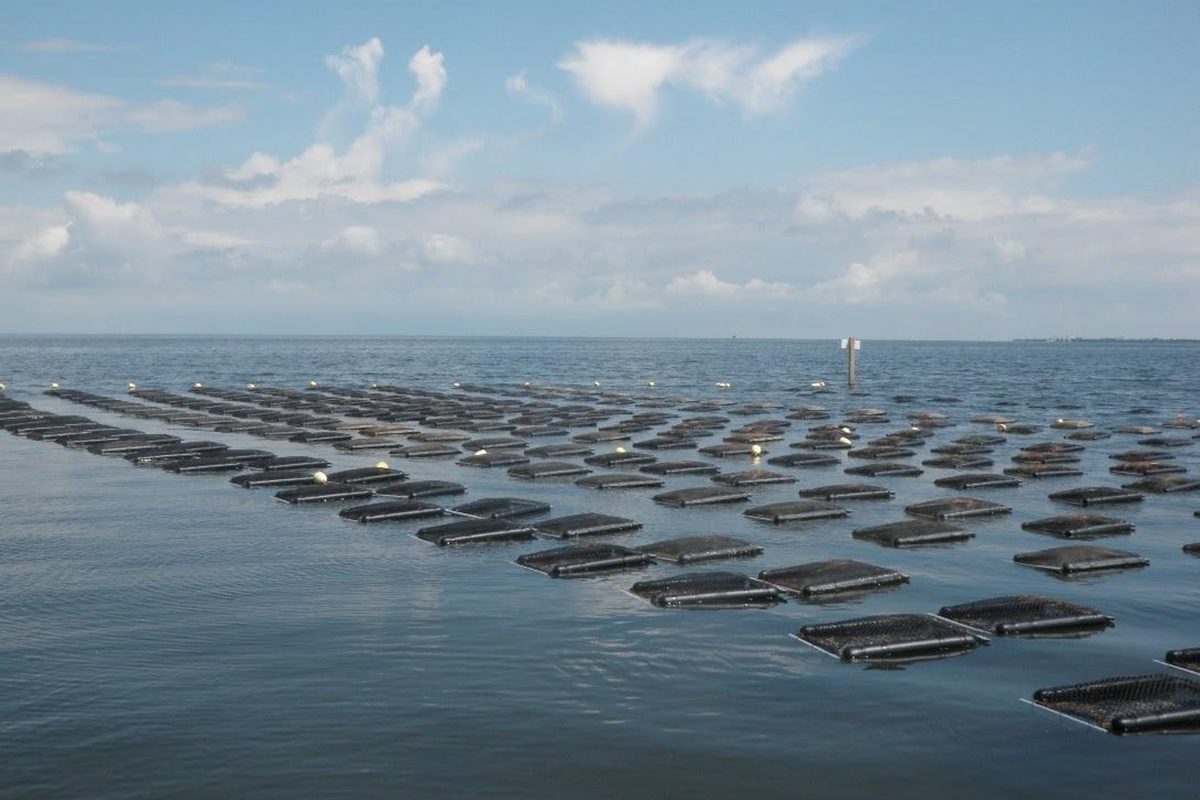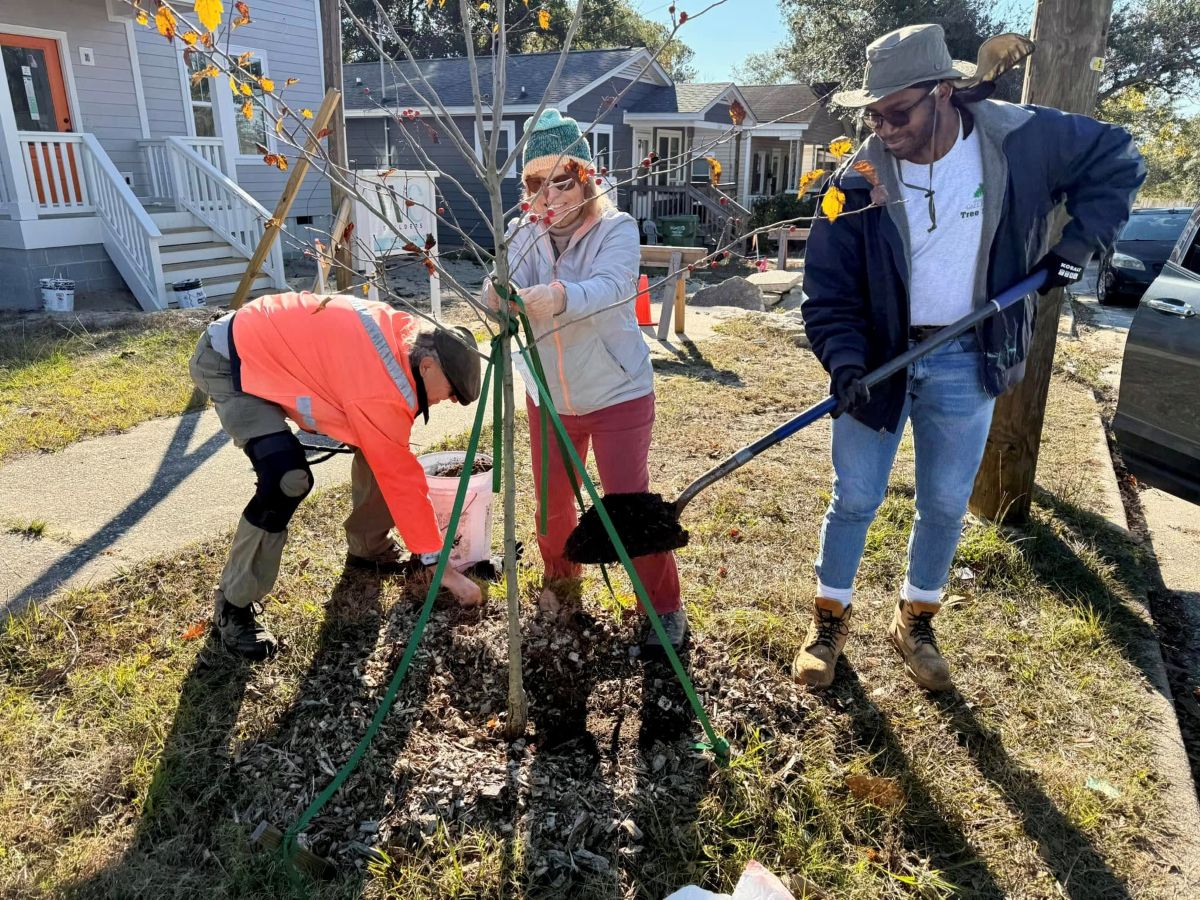
This article has been updated.
Efforts are in the works by state and federal agencies to help the aquaculture industry survive the effects of climate change.
Supporter Spotlight
“Most of us know that climate change impacts are happening now and that they will continue to get worse in North Carolina. We’re experiencing more intense storms, greater rainfall and rising sea levels,” North Carolina Sea Grant Coastal Resilience Specialist Sarah Spiegler said during a recent webinar.
The webinar on the state of climate resilience in North Carolina aquaculture was held Sept. 28 as part of National Oceanic and Atmospheric Administration Office of Aquaculture’s National Aquaculture Week.
As sea levels rise, elevation of the water table continues to increase and other processes are affected such as erosion, inundation, groundwater systems and water quality, she said. Adding that the shellfish aquaculture industry in North Carolina is also impacted by climate change.
“Our coastal ecosystems are vulnerable to more frequent and intense storms, degraded water quality, variable salinity and dissolved oxygen levels, higher water temperatures and increased inundation. This impacts suitability for harvest, mortality rates, public health risk, disruption of shellfish markets and time and money to repair and recover from storms,” she said.
Sea Grant Coastal Aquaculture Specialist Eric Herbst reiterated during the webinar that storm severity is increasing and explained how climate change impacts lease site suitability, temporary closures, mass mortality events and public health risks.
Supporter Spotlight
While the state has been experiencing coastal storms since time immemorial, one thing that can’t be denied and one thing that is happening is air and water temperatures are rising, he said. “We’ve had the wettest five-consecutive-year interval on record in the last 10 years. Our sea level is rising. And we also have had extreme precipitation events greater than 3 inches of rainfall occurring in 24 hours within the last decade as well. The severity of the weather, the frequency, the duration, all appear to be increasing here in North Carolina.”
Sea level rise will likely reduce the amount of time a farmer can work their lease, especially without a workboat, and cause variable salinity, higher temperatures and lower dissolved oxygen that can inhibit growth and increase mortalities. Going forward, sea level rise and decreased water quality may cause some existing sites to be unsuitable for shellfish aquaculture.
In terms of adaptation, Herbst continued, shellfish farmers are already experiencing climate change issues, and they have been for a while. One of the state’s longtime shellfish farmers has elevated their land-based operations because of storm-related flooding, for example.
Another option is to either relocate or acquire more leases, allowing farmers to move shellfish to different sites based on water quality and time of year. Researchers in the state are in the process of creating stress-tolerant oysters through selective breeding, as well.
Temporary closures are another big issue and are becoming a bigger issue every year, Herbst said. “Some of our growers are closed 100 to 150 days out of the year, and this is due to rainfall events.” These closures create challenges in terms of inventory and asset management, and cash flow issues for those unable to sell their product.
Mass mortality events are another impact from climate change. One Herbst thinks has the possibility to “stop the industry in its tracks.” There’s been an increased frequency, with at least one mass mortality event every year for the last three years. While they don’t know the cause, it seems to correlate with high temperature and salinity. These mass mortality events seem to affect oysters when they’re close to or are large enough to harvest but not young oysters, oyster seeds, or wild oysters, which suggests the wild oysters have adapted.
Herbst said possible solutions are to acquire additional lease sites in lower-salinity areas to relocate harvest-sized animals in the summer or sell all harvest-sized oysters by the end of spring and start a new crop throughout the summer.
“And then of course we have our silver bullet,” which is a selective breeding program underway to create tolerant oysters.
With human health risks, he said they’re seeing higher temperatures that could result in an increase in the prevalence of pathogenic Vibrio species in North Carolina shellfish.
“We’ve been very lucky so far. We really don’t have any issues with Vibrio and we manage it very simply with time and temperature regulations,” he said. “But with increased temperatures on the way, that might be something that becomes a challenge.”
Same thing with harmful algal blooms, Herbst continued. With changing water quality parameters, higher temperatures, varying or higher salinities, a new species of harmful algal bloom could become more prevalent, and may have a negative effect on human health.
“In the future, we may be required to put together some specific testing infrastructure and capability for Vibrio and for harmful algal blooms. If it gets really bad, we may just require a policy change across the board where we won’t be allowed to sell farmed oysters anymore in the summer,” he said.
Speigler explained that at the state level, after the September 2018 Hurricane Florence, which caused extensive flooding inland and in low-income communities, the state put in place resilience efforts, including Gov. Roy Cooper’s October 2018 Executive Order 80, committing the state to address climate change and transition to a clean energy economy. The order requires all state agencies to integrate climate change mitigation and adaptation practices and to develop a climate risk assessment and resilience plan, which was published in 2020.
Another state-level effort to support the aquaculture industry is from the Division of Marine Fisheries.
Division Habitat and Enhancement Section Chief Jacob Boyd said during the webinar that the division was working to provide information and products such as storm-preparation resources, disaster funding, coordination on a state, regional and national scale, and innovative solutions that combine ecological and economic benefits.
“The process of building resilience is complex and requires iterative ways of thinking that includes assessing and planning, responding to the disaster and then recovering by assessing resilience and managing adaptively,” he said.
The industry bounced back after Hurricane Florence in 2018 when the North Carolina General Assembly passed two measures allocating $11.6 million for the commercial fishing industry, which included shellfish aquaculture operations. Improving forecasts and computer systems, expediting information to decision-makers, and providing data and tools for analysis are part of the effort to “build beyond,” he explained.
The division has launched online tools to help shellfish farmers like the 2019 interactive shellfish aquaculture mapping tool to provide information about shellfish leases. Boyd said that as more data are made available for climate change impacts, the tool can be modified to include this information to help growers decide on new shellfish leases.
“The shellfish lease term in North Carolina is 10 years and requires a large investment. Therefore, the more information growers can be provided about the potential location of their shellfish lease, the better decision they can make,” he said.
Another tool that growers can use when choosing new shellfish lease locations, or when determining potential closures for existing shellfish leases, is called ShellCast. This online tool helps shellfish growers anticipate temporary harvest area closures due to excess rainfall and make data driven management decisions.
“Forecast information on temporary closures is helpful because closures impact businesses that go shellfish growers cannot harvest shellfish when a temporary closure is in effect,” Boyd said.
Partnerships with organizations and agencies have provided opportunities to support the aquaculture industry as climate change challenges it.
In 2021, Boyd said the division partnered with NOAA, Sea Grant, National Weather Service and the North Carolina Coastal Federation to bring together the aquaculture community for a workshop. There, shellfish farmers and others in the industry received resources to help prevent aquaculture debris and prepare for storm events.
Sea Grant and Carteret Community College in Morehead City partnered in 2020 to launch the North Carolina Shellfish Farming Academy, which combines the classroom with field training, and provides information on storm preparation and gear maintenance.
Another effort Boyd mentioned is the State Marine Aquaculture Coordination Network formed last year to improve state marine aquaculture governance for leasing programs from Virginia to Texas. The network is expected to expand nationally in hopes of creating a long-term network of all coastal states.
“Climate change is currently and will continue to impact North Carolina and its shellfish aquaculture industry through increasing extreme precipitation events, increasing annual average temperature and extreme heat days, increasing sea level rise and other impacts such as storm frequency and intensity from climate change. These impacts are and will become even more significant with the continual growth of North Carolina shellfish aquaculture industry,” Boyd said.
“While we have made a lot of progress and incorporating climate resilience best practices in North Carolina shellfish aquaculture industry, there continue to be needs to address and bridges to be built and maintained to create long-term resilience in the industry,” he added.







